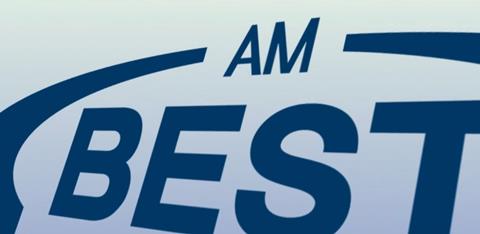Discipline holds firm on attachment points, as the re/insurance industry digests mid-year renewals, including rate softening, recent wildfire losses, and gears up for the usual hurricane season jeopardy and the Monte Carlo rendezvous.

As the reinsurance sector prepares to navigate the second half of 2025, industry leaders are walking a fine line between optimism and caution.
At a mid-year online briefing hosted by AM Best, senior executives and analysts struck a confident tone about current conditions following the June and July renewals.
However, they acknowledged some persistent headwinds—including casualty trends, climate-linked losses and geopolitical instability—that could yet shift the balance.
Panellists included Jim Williamson, president and CEO of Everest Group; Greg Hendrick, president and CEO of Vantage Risk; and Dan Hofmeister, associate director at AM Best. The session was moderated by AM Best’s senior associate editor, John Weber.
Hofmeister began by explaining AM Best’s rationale for upgrading its sector outlook to positive in 2024. While the hardening of 2023 was already well underway, he said, it took time for analysts to become confident in its persistence.
“There was quite a bit of uncertainty about the persistence of those conditions,” Hofmeister said. “Now, in retrospect, a lot of those concerns have been quelled… the terms and the attachment points are really what we believe led to the substantial improvement.”
He added that reinsurers had returned to profitability across two consecutive years, achieving combined ratios below 90% and returns on equity above 17%. That track record, he suggested, coupled with robust capitalisation and higher reinvestment yields, gave the sector its most positive position in years.
Junev and July renewals
Despite some softening in rates, particularly in the Florida market, speakers agreed that market discipline remained strong.
“We came into the year with rates really at or near all-time highs,” said Williamson. “At the same time, our clients wanted to buy more cover… companies [were] buying more at the top of their programmes to protect themselves from the long-term trends around climate change.”
Williamson described the 2025 midyear renewals as “really constructive”, adding that the 5–10% rate reductions remained “exceptional” given the levels they were coming down from.
Hendrick agreed, noting that while there had been isolated slippage in terms and conditions, the overall environment remained orderly. “The marketplace overall was great to trade in,” he said. “Terms and conditions held. We did see some so-called ‘prepaid reinstatements’ come back, but discipline was there.”
He also acknowledged a rise in activity on aggregate covers, despite a lingering mismatch in price expectations. “The difference between the bid and the ask is a bit gapped out at the moment,” he said. “But there was more activity, which I think is healthy.”
Wildfire losses and risk appetite
One of the complicating factors at midyear was the significant wildfire losses recorded in the first half of 2025. Hofmeister noted that although these were not directly relevant to the Florida-focused 1 June renewals, they nonetheless had an indirect effect on market sentiment and capital positioning.
“Any prudent company is going to take a step back and say, how cautious do we need to be with our capital?” he said. “While theoretically it shouldn’t [impact appetite], obviously it’s going to have some.”
Williamson concurred, suggesting that pricing might have softened more in the absence of the wildfire losses. “It’s impossible to prove the counterfactual,” he said, “but I suspect that’s the case.”
Hendrick added that the scale and speed of wildfire damage had simply reinforced the need for risk-adjusted pricing. “Bad things happen—that’s what reinsurers are here to pick up,” he said. “It puts a floor under the rate.”
Florida’s recovery and ILS’s role
Both Williamson and Hendrick pointed to improvements in Florida’s property insurance market, driven by recent legal reforms and strengthened capitalisation.
Hendrick said: “The phrase that comes to mind is ‘back from the brink’. Three or four years ago, the market was really stressed out… now, insurers are positioned to absorb losses and even IPO activity has returned.”
On the capital side, the resurgence of insurance-linked securities (ILS) was another key theme. Williamson described a more mature ILS landscape than in previous cycles.
“We’re getting very favourable pricing on relatively remote cat bonds, which are an important tool to manage tail exposure,” he said. Everest’s sidecar vehicle, Mount Logan, had attracted nearly $2 billion in assets under management.
Hendrick noted record cat bond issuance and high engagement from both investors and clients. “We deployed a billion and a half this year,” he said. “The next big phase is how to apply ILS more broadly—to cyber, casualty and other lines of business.”
Monte Carlo outlook
With the Monte Carlo Rendez-Vous de September looming, the traditional starting gun on negotiations ahead of 1/1 treaty reinsurance renewals, panellists highlighted some key topics they expect to dominate conversations.
“If you’re a reinsurer, the focus is on how to drive growth in areas that are still profitable,” said Williamson. “For brokers, elevated but stable rates make trading easier.”
Hendrick warned that geopolitical volatility, climate risk and social inflation were all contributing to an elevated cost of capital. “All that leads to more demand for the products we sell as reinsurers,” he said. “But it does come at a cost—and that cost is not going down.”
Despite the challenges, speakers remained upbeat about the industry’s trajectory.
“I just can’t help but feel pretty confident about this market,” Williamson added. “We’ve seen the discipline persist, and that leads me with the feeling that we’ve got a lot of opportunity ahead.”










No comments yet